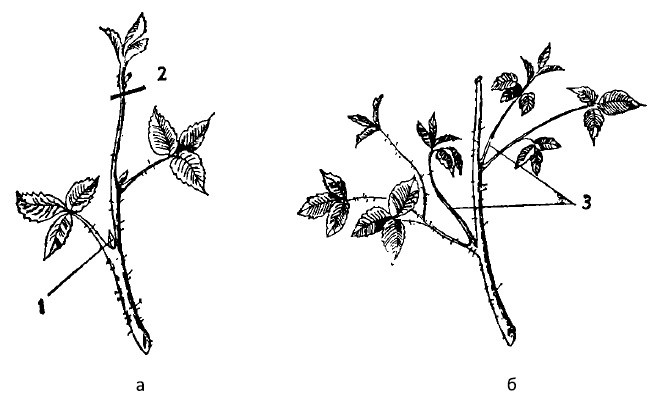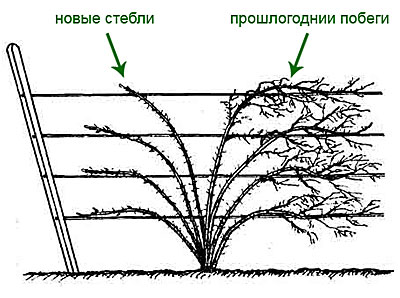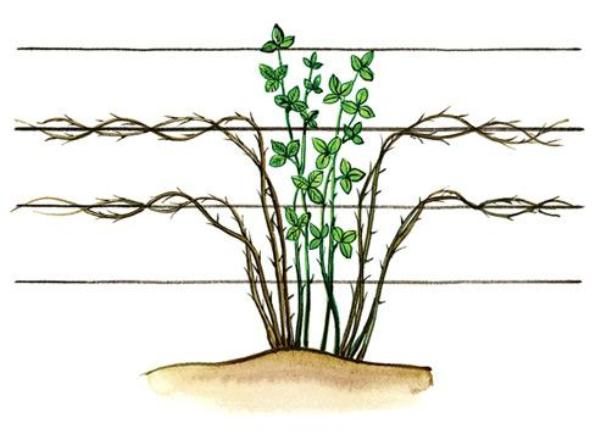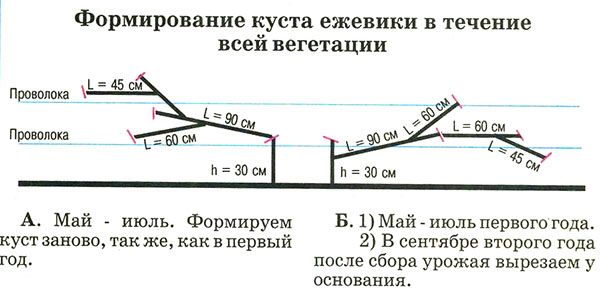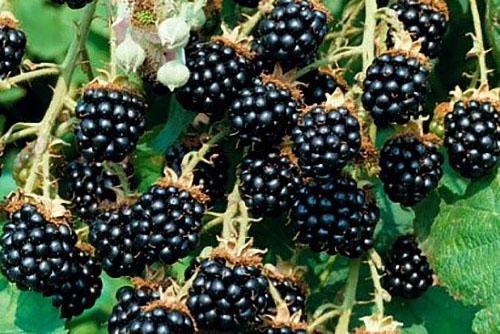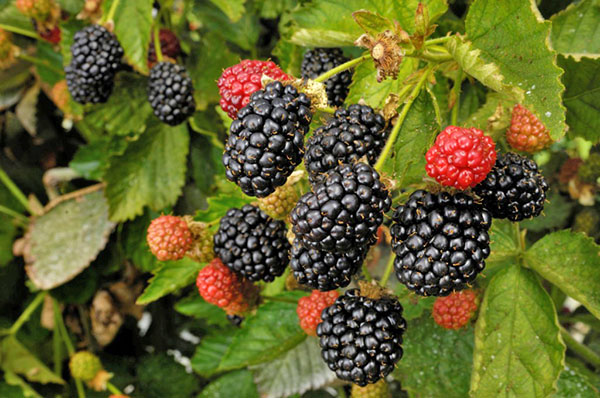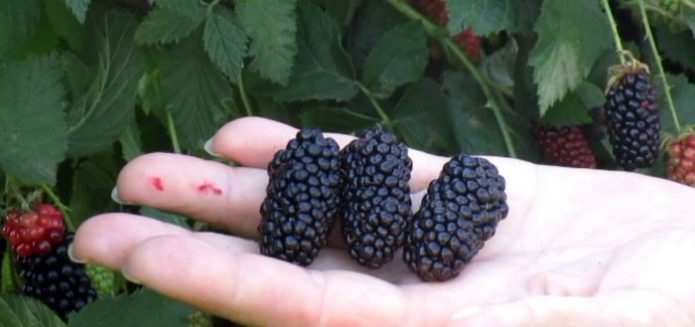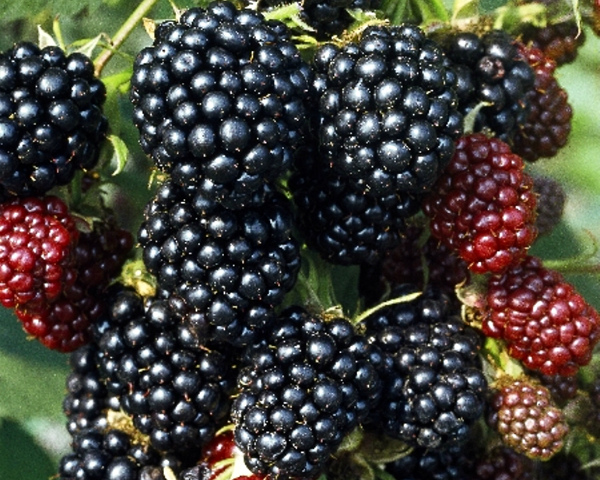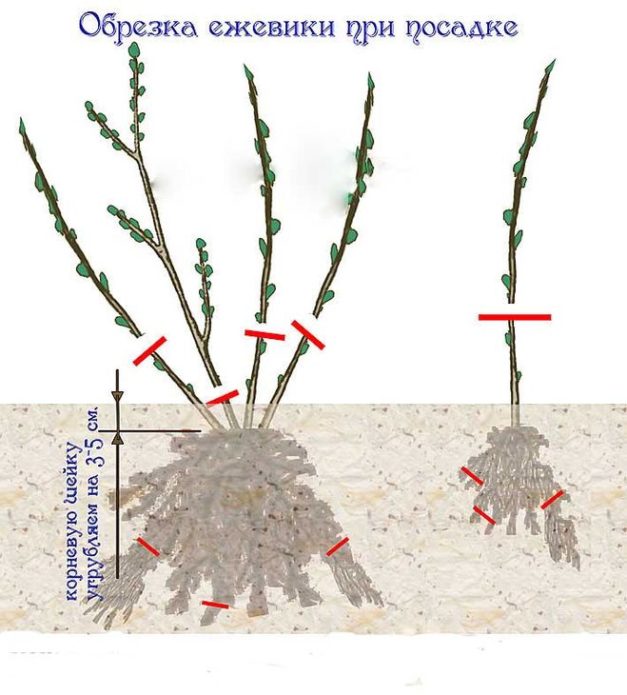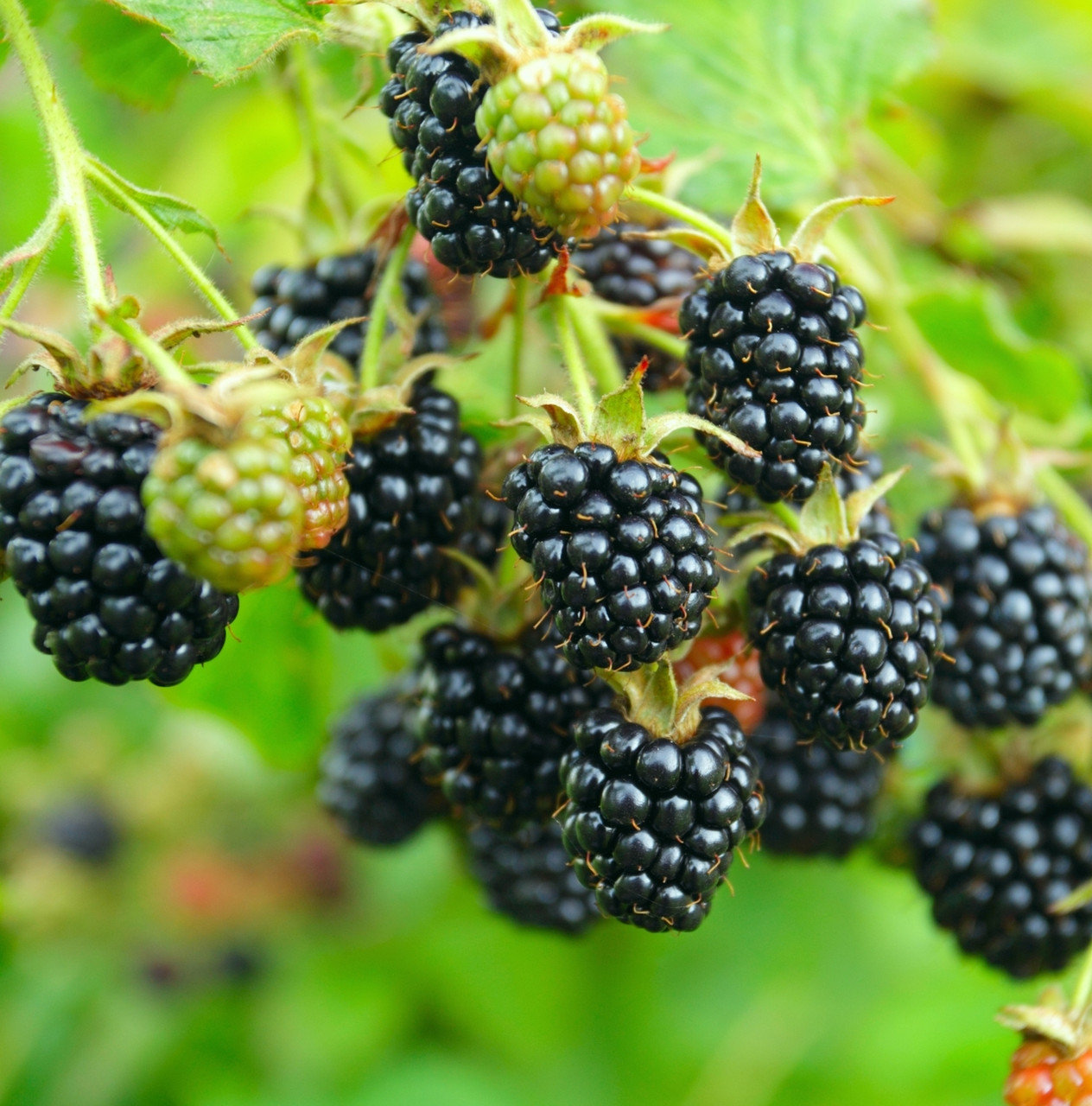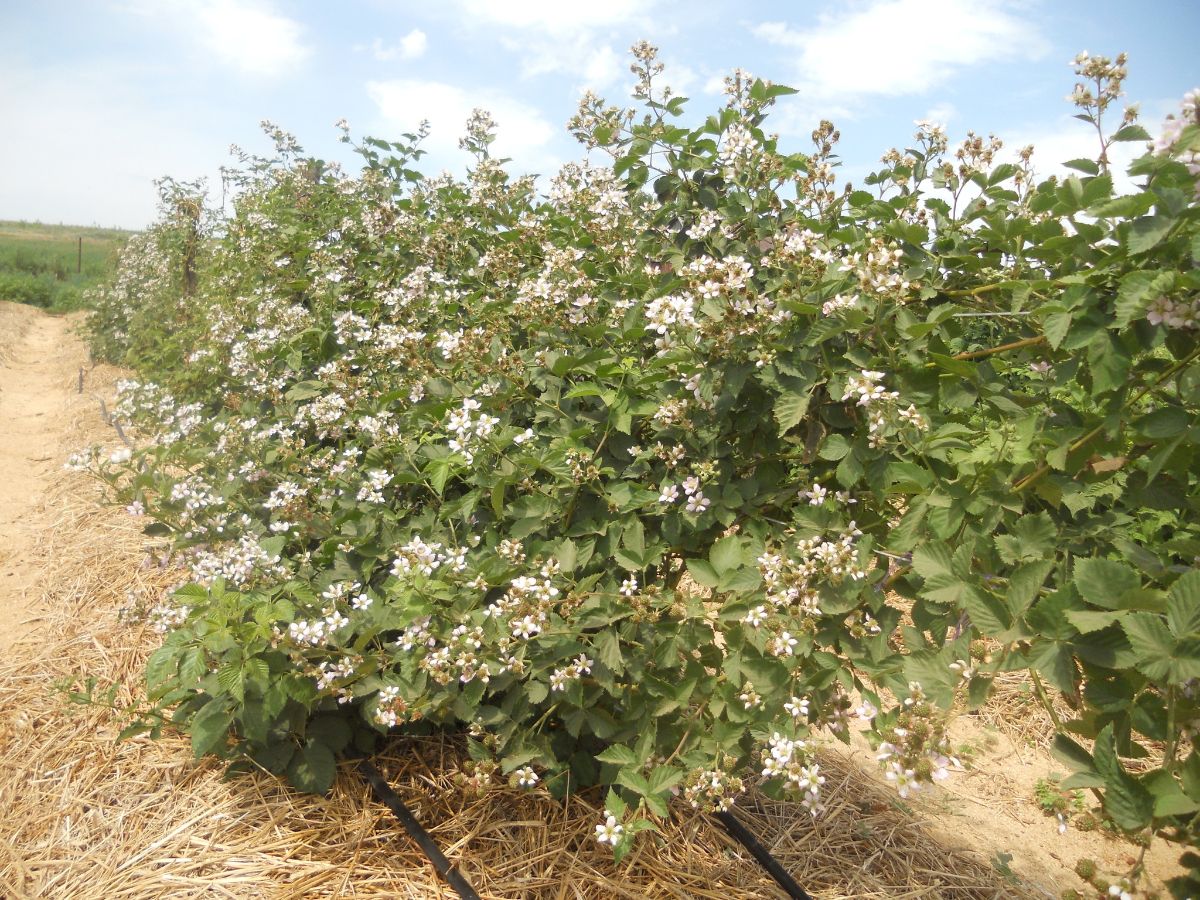Blackberries need regular pruning of the bushes, which will help not only create a decorative appearance of the plant, but also improve its yield. The peculiarities of the procedure differ for certain types and varieties of crops, as well as depending on the season.
Content
What is blackberry pruning for?
Pruning is a mandatory agrotechnical technique for growing blackberries: on time and correctly carried out, it not only gives a well-groomed look to blackberry plantings, but also:
- increases the yield of each plant;
- facilitates caring for him;
- reduces the risk of disease and pests;
- prevents thickening of the bush;
- promotes better lighting of the branches.
The need for its implementation is due to the peculiarity of the development of culture. The underground part of plants of all groups is perennial, and the aboveground part is two years old. In the first year of the growing season, stems are formed from the buds of renewal, from the axillary buds of which fruiting lateral shoots will develop the next year. The matured stems die off by autumn: they are replaced by the shoots of the current year, the whole cycle repeats.
As a result of properly pruning, healthy and generously fruiting berry bushes grow.
Pruning blackberries of different groups
All types of wild blackberries and varieties obtained from them are divided into 3 groups:
- upright (kumanika);
- creeping (dewdrop);
- intermediate semi-creeping forms.
The formation of a plant depends on the type of its growth, and the absence or presence of thorns only affects the complexity of the process itself, and such techniques as removing old shoots and shortening the stems at the time of planting are common to all varieties of blackberries.
Did you know that garden blackberries are divided into 2 varieties: kumaniku and dewweed?https://flowers.bigbadmole.com/en/yagody/ezhevika-sorta-opisanie-foto.html
Bush blackberry
For kumanik, an important procedure is cutting off the upper part of the shoots (pinching). It is carried out in the summer: in young stems, 90–120 cm tall, the tops of 7–12 cm long are removed. This pinching leads to the formation of lateral shoots, which are then shortened to 40–50 cm. So the growths are formed in the form of a kind of compact tree with an increased area fruiting.
Creeping blackberry
It is convenient to grow dewy varieties on a support. The simplest way to place plants on a trellis, understandable for beginners, is fan formation, which is well suited for relatively low-growing varieties:
- young growths, about 30 cm high, are rejected to the left (for example) side and obliquely tied to a wire;
- new shoots of the next year (upon reaching the same height) are deflected to the right and fixed;
- the stems that have fruited last year (those on the left) are cut to the ground.
This procedure is repeated annually: growing whips and fruit branches are at a distance from each other, without complicating maintenance and pruning.
The method of weaving is somewhat more complicated, when fruit and new shoots are separated only by different levels of arrangement on the trellis.Young summer shoots are directed both to the right and to the left of the center of the bush, tying them to the lower rows of wire, so that in the fall it is easier to remove them from the supports for the winter and not break. The next spring, they are fixed for fruiting in the same way, but already on the top of the trellis. New shoots take up space in the lower levels on either side. Old stems are cut in the fall, and the growths are laid and covered for the winter.
Biennial shoots of creeping blackberries can reach lengths of 3–3.5 m or more. For convenience and increasing the fruiting zone, it is recommended to sequentially pinch the shoots:
- The branches that have grown after planting pruning are shortened to a length of 90 cm.
- The lateral shoots appearing on them are cut to 60 cm.
- The growths that have already grown on these lateral branches are cut off to 45 cm.
In the next season, new shoots are formed and placed on the trellis in this way: highly branched, well-lit bushes are obtained. The main part of the berries in most creeping varieties is formed on the middle part of the stems, so trimming their tops will not lead to a significant decrease in yield. And although the number of berries is decreasing, their size often increases.
Repairing blackberry
There is a group of blackberry varieties capable of producing 2 crops per year, they are called remontant. These include:
- Ruben;
- Prime Arc;
- Black magic and others.
Young shoots growing in spring will bloom in the same summer, and in autumn you can taste the first berries. The next year they will give a summer harvest, and the newly appeared increments - an autumn one.
Caring for these plants is extremely simple, and pruning depends on the purpose of growing. If you plan to get berries both in summer and in autumn, young shoots are left and covered for the winter, like the rest of the blackberry.
If only the second harvest is important, after the end of fruiting, all the stems are mown at the root, the plantings are mulched. The repairing blackberry grows as a strong bush with straight stems, it does not need to be removed from the supports, covered, then raised again in the spring, etc.
Features of pruning certain varieties
In addition to the general and obligatory for all varieties of blackberries to remove old branches in autumn, varieties of different groups have their own pruning features.
Blackberry Agavam - a representative of one of the most frost-resistant bush varieties - at the end of summer it is necessary to pinch strong erect shoots in order to accelerate their ripening. A distinctive feature of the variety is the ability, along with powerful stems, to release thin flexible shoots on fertile soils. If they are not cut out in the fall, but saved for the winter, in the spring they can, if necessary, become a substitute for frozen thick branches.
The powerful bushes of the thornless blackberry Thornfrey consist of creeping long shoots raised at the base, which can reach a length of 6 m.It is difficult to place the whips on the trellis without pruning, moreover, the variety is very fertile, its formation must be started from the moment of planting in order to avoid overloading the stems with the crop. The main shoots are shortened to 3-4 m, and the lateral ones - to 0.5 m. Do the same with the varieties:
- Black Satin;
- Smutsem;
- Dirksen Thornless.
New Zealand early ripening variety Karaka Black with flexible spiny shoots of medium vigor is distinguished by a small distance between axillary buds. Therefore, its lashes, up to 5 m long, do not need to be cut in order to cause additional lateral branching: there will be a lot of fruit branches.
Blackberry Karaka Black is well known to those gardeners who have already decided to try this culture on their plots:https://flowers.bigbadmole.com/en/yagody/ezhevika-karaka-blek.html
Thornless Evergreen is a very original variety with unusual evergreen carved leaves, entering late into full fruiting (in the 5th year).The lashes grow long - up to 6 m, it is not necessary to shorten them for greater branching: the variety is already harvestable. Thornless shoots are easy to place on the trellis, resulting in a magnificent green screen. True, for the winter it will have to be removed from the support until next spring.
Pruning during planting
Blackberry seedlings are planted both in spring and autumn. For all species and varieties, pruning of the stems per bud at a height of 25 cm above the ground after planting is required.
Spring pruning
In the spring, pruning is of a sanitary nature, its purpose is to put the plants in order before the beginning of the growing season and prepare them for flowering and fruiting.
In overwintered bushes during this period, parts of the shoots affected by frost are removed, mainly for upright bush forms. The stems are shortened to the first living bud, the drooping tops are cut off at the bend.
In late spring and summer, they regulate the number of replacement shoots: weak ones that fall outside the allotted limits are removed, leaving up to 8 well-developed shoots per plant or up to 16 per 1 m of planting. In the summer, they continue to form plants, taking into account the characteristics of each species and variety.
For inexperienced gardeners, it is better to start growing blackberries with easy-to-care thornless or remontant varieties.
Autumn pruning
The main pruning of blackberry bushes is carried out in the fall, when they finish growing and prepare for wintering. If the formation of plants was carried out correctly and the fruit-bearing stems and replacement shoots are separated from each other, then the main task - the removal of old branches - is easily accomplished (pruning of prickly varieties is done with durable gloves). With a sharp pruner, they are cut out at the very base, taken out of the site and burned, thereby reducing the possibility of damage to plantings by diseases and pests.
Weak tops of young shoots are removed. In kumaniks, all stems are shortened at a height convenient for harvesting, usually 1.6–1.8 m. The bush is thinned out, leaving 3-4 strongest replacement shoots in erect plants, and 4–6 in dew grass. You can leave 2-3 more stems in case of a harsh winter, and remove the extra ones in the spring.
After such pruning, the bushes are ready to be removed from the supports and sheltered for the winter. In the spring, according to the results of wintering, all that remains is to carry out sanitary pruning.
Caring for blackberries in the fall in preparation for winter: https://flowers.bigbadmole.com/en/uhod-za-rasteniyami/ezhevika-uhod-osenyu-podgotovka-k-zime.html
Video: pruning blackberries in the fall
Pruning blackberries includes shortening the stems left for fruiting, removing two-year-old fruiting shoots, as well as those affected by diseases and pests, frozen, broken and underdeveloped. This will allow the plant to direct all its forces to the formation of fruit branches, which means it will lead to an increase in yield.
